Celiac disease is a condition that occurs as a result of a hypersensitivity reaction to gluten. Individuals who are allergic to gliadin have to avoid all forms of food items that contain gliadin. Diet charts may help patients with celiac disease as this is the only treatment.
Buy "7-Day Gluten-Free Meal Plan" from Amazon
Classification of Celiac disease:
Celiac disease may present with the classical symptoms of a chronic diarrheal state resulting in malabsorption and stunted growth. Patients may, however, sometimes present with anemia, osteoporosis, infertility, short stature, arthritis, or neurological features. These patients do not have diarrhea or other abdominal symptoms. These patients have atypical celiac disease and have elevated plasma antibody directed against gliadin, endomysial, and tissue transglutaminases. Occasionally, patients do not have any symptoms and are diagnosed only on the basis of positive serology. These people are thought to have celiac disease that is either subclinical or asymptomatic. Patients can have a normal duodenal architecture in addition to a positive serology. These people may have celiac disease. A gluten-free diet helps people with latent celiac disease, a condition in which they had full-blown celiac disease as children. Even when retested in adulthood with a gluten-containing diet, many people do not exhibit symptoms.
How to treat a patient with celiac disease:
The most crucial step in the treatment of individuals with celiac disease is a gluten-free diet. Patients also need to be investigated for nutritional deficiencies and treated accordingly. Concomitant-associated diseases like diabetes, thyroid disorders, arthritis, and immune deficiency should also be identified and treated.
Let's discuss the main topic - diet charts for patients with celiac disease:
Before formulating a diet chart, it is important to note that patients with celiac disease should avoid gluten. Gluten is a group of proteins that are found in various bowls of cereal. As a general rule, patients with celiac disease should avoid wheat, rye, and barley.
Rice, corn, buckwheat, teff, and potatoes are all safe options. Vinegar, wine, and distilled alcoholic drinks are also gluten-free. However, you should stay away from beers, ales, lagers, and malt vinegar. (Ref: Celiac serology treatment).
Some patients develop concomitant lactose intolerance and should use dairy products with caution.
Buy Our Premium Organic Berberine Oolong Mint Tea
Nutritional value of some commonly used food items:
1 Chapati: 104 Kcal 1 cup serving rice: 240 Kcal 1 egg: 78 kcal 1 cup of tea with 30 ml of milk and 2 tsp of sugars: 37 kcal 1 cup of garden salad: 11 Kcal 1 cup of mixed vegetables: 118 kcal 1 fresh fruit: 80 - 100 Kcal A piece of meat: 100 - 180 kcal one cup Nimko: 50 kcal one cup of dal: 198 kcal One cup of milk: 149 kcal One cup of skim milk: 83 kcal Here I have posted diet charts in Urdu for patients with celiac disease. These charts are made by our nutritionist Dr. Mehwish Sheraz. These diet charts provide a rough estimate of the amount of Kcal. 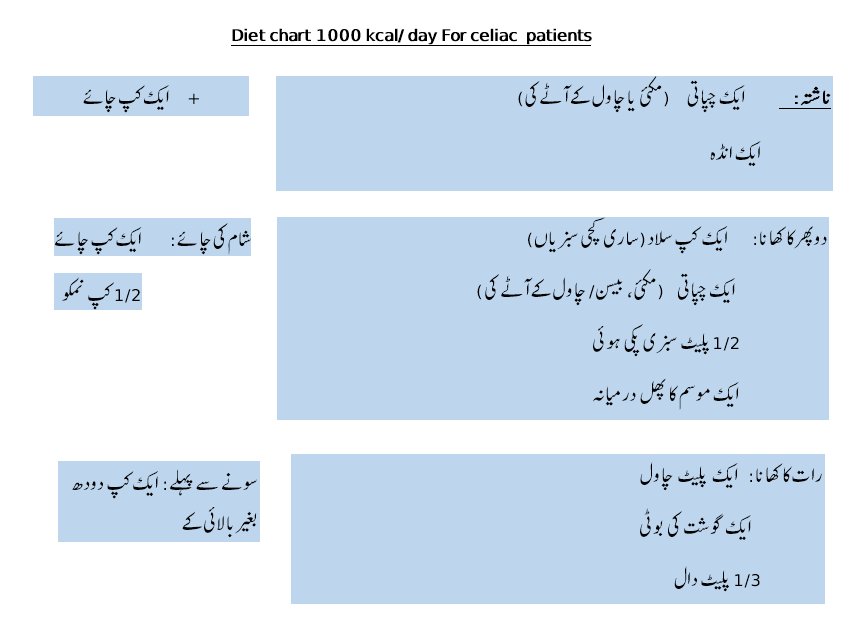 1000 Kcal Diet char in Urdu for patients with celiac disease
1000 Kcal Diet char in Urdu for patients with celiac disease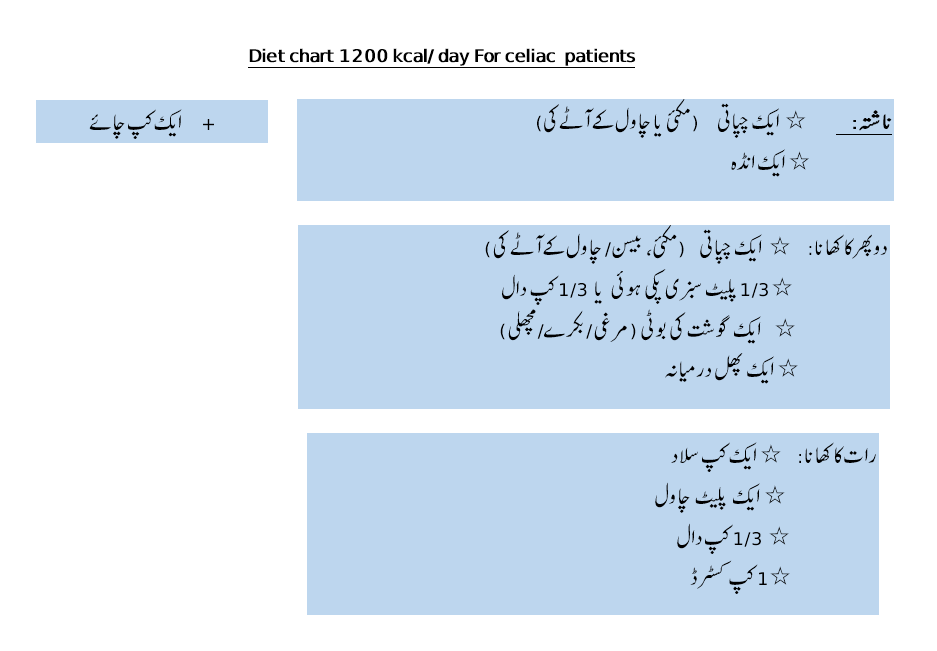 diet chart 1200 Kcal in Urdu for celiac disease
diet chart 1200 Kcal in Urdu for celiac disease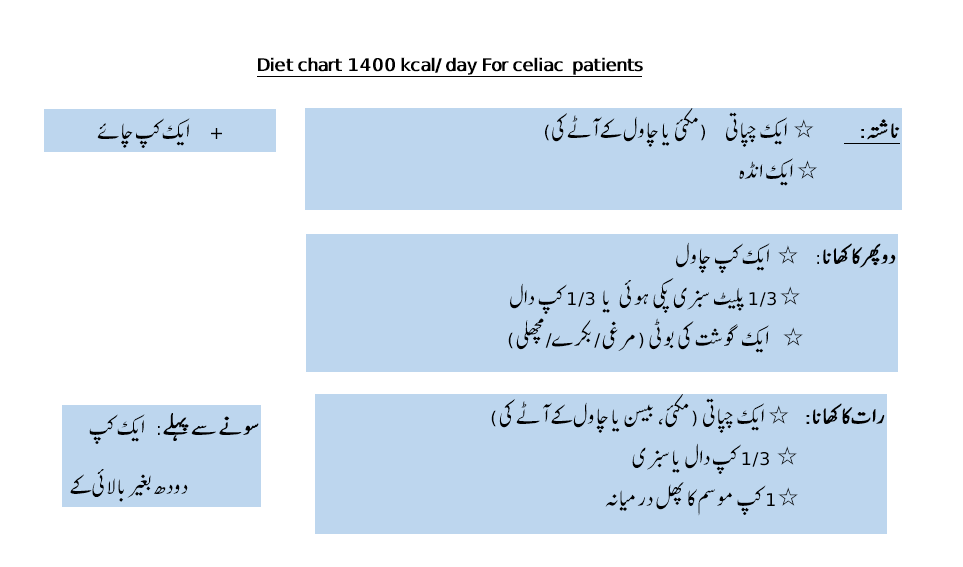 1400 Kcal Diet chart in Urdu for patients with celiac disease.
1400 Kcal Diet chart in Urdu for patients with celiac disease. 1500 Kcal diet chart for patients with celiac disease (gluten-free diet chart)
1500 Kcal diet chart for patients with celiac disease (gluten-free diet chart) 1600 Kcal diet chart for patients with celiac disease (gluten-free diet chart)
1600 Kcal diet chart for patients with celiac disease (gluten-free diet chart)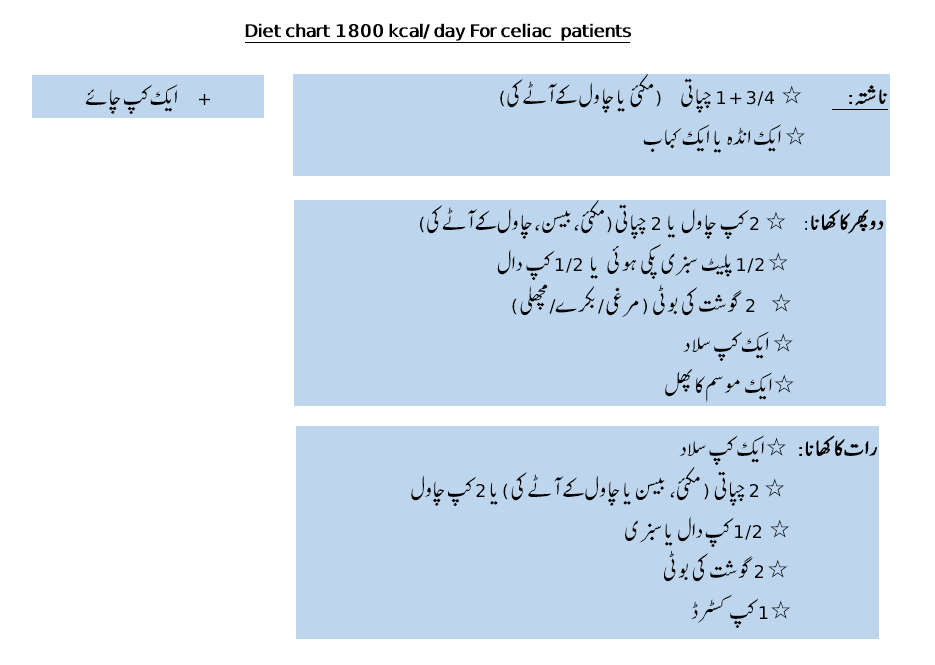 1800 Kcal diet chart for patients with celiac disease (gluten-free diet chart)[/caption]
1800 Kcal diet chart for patients with celiac disease (gluten-free diet chart)[/caption] 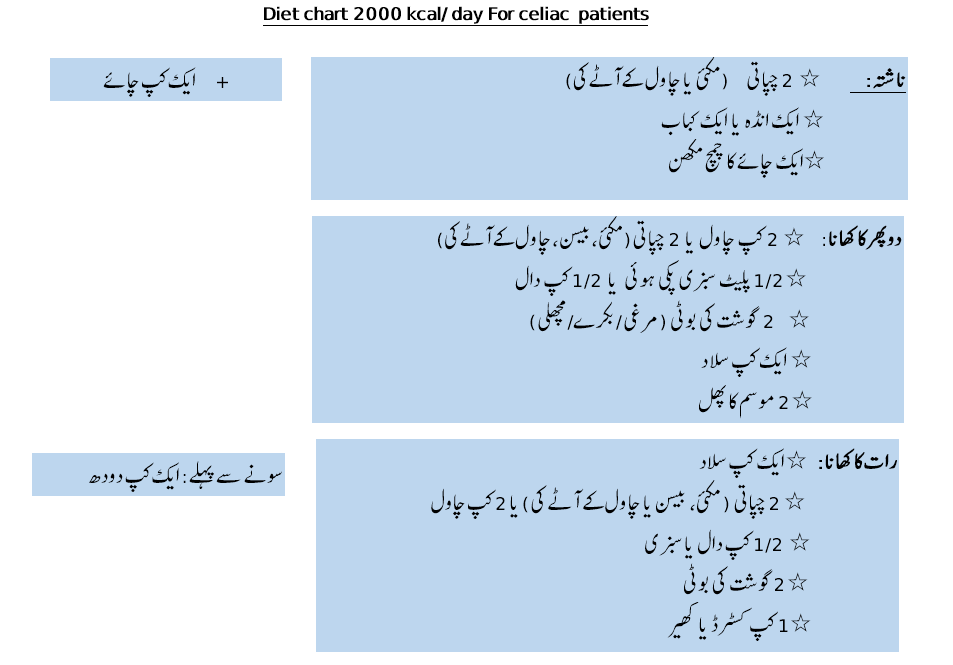 2000 Kcal diet chart for patients with celiac disease (gluten-free diet chart)[/caption]
2000 Kcal diet chart for patients with celiac disease (gluten-free diet chart)[/caption]







